Recent Posts
Restoring Hope: My Journey Through Kitchen Fire Damage Removal
7/16/2024 (Permalink)
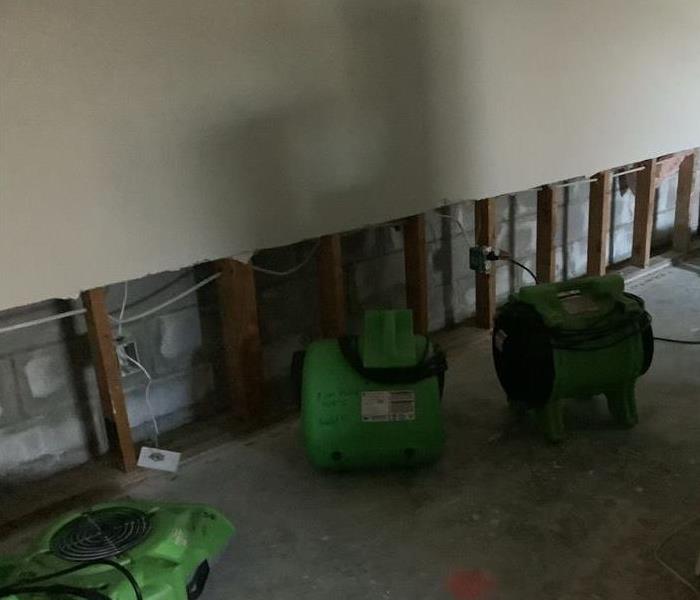 Smoke Damage NO MORE! SERVPRO of East Dallas hard at work today in Deep Ellum
Smoke Damage NO MORE! SERVPRO of East Dallas hard at work today in Deep Ellum
There’s nothing quite as unsettling as waking up to the acrid smell of smoke and finding your kitchen, the heart of your home, marred by fire damage. It happened to me one chilly evening, and the sight of blackened walls and charred appliances felt like a nightmare. But through this ordeal, I discovered the resilience of a home and the transformative power of restoration. Here’s my story of turning devastation into renewal.
The Initial Shock
The aftermath of a kitchen fire is overwhelming. My first step was ensuring the safety of my family and contacting emergency services. Once the fire was out and the immediate danger was gone, I stood in the kitchen, feeling a mix of gratitude and despair. The damage was extensive—walls covered in soot, the smell of smoke lingering in the air, and beloved kitchen gadgets reduced to mere memories.
Assessing the Damage
Once the initial shock subsided, it was time to assess the damage. I took detailed notes and photographs for insurance purposes. This documentation proved invaluable when dealing with the insurance company. An adjuster visited and, after careful evaluation, we received the funds necessary for restoration.
Professional Help
Removing fire damage is not a DIY task. I called in professionals who specialized in fire damage restoration. They started with a thorough cleaning to remove soot and smoke residues. Specialized equipment like air scrubbers and dehumidifiers were employed to purify the air and dry out moisture left by firefighting efforts.
Cleaning and Deodorizing
The cleaning process was meticulous. Every surface, nook, and cranny had to be scrubbed to remove soot. Professionals used alkaline cleaners to neutralize the acidic nature of soot and prevent further damage. Deodorizing was equally crucial. They used thermal fogging and ozone treatments to eliminate the persistent smoke odor.
Rebuilding and Renovation
With the cleaning complete, it was time to rebuild. I saw this as an opportunity to update my kitchen. Working with a contractor, we chose new cabinets, countertops, and appliances. We installed a more efficient ventilation system to prevent future issues and opted for fire-resistant materials where possible.
Personal Touches
Amidst the reconstruction, I added personal touches to make the kitchen feel like home again. Family photos, a fresh coat of paint in a cheerful color, and new curtains transformed the space. It became not just a kitchen, but a symbol of resilience and renewal.
Reflecting on the Journey
Looking back, the journey from devastation to renewal was arduous but rewarding. I learned valuable lessons about fire safety, the importance of professional help, and the strength found in rebuilding. My kitchen, once a scene of chaos, now stands as a testament to the power of restoration and the heart of many new family memories.
Final Thoughts
If you ever find yourself facing fire damage, remember that recovery is possible. Seek professional help, take it one step at a time, and view the process as an opportunity to create something even better. The heart of your home can beat stronger than ever after a fire, turning a tragic event into a fresh start.
SERVPRO of East Dallas Trusted Fire Damage Repair
7/16/2024 (Permalink)
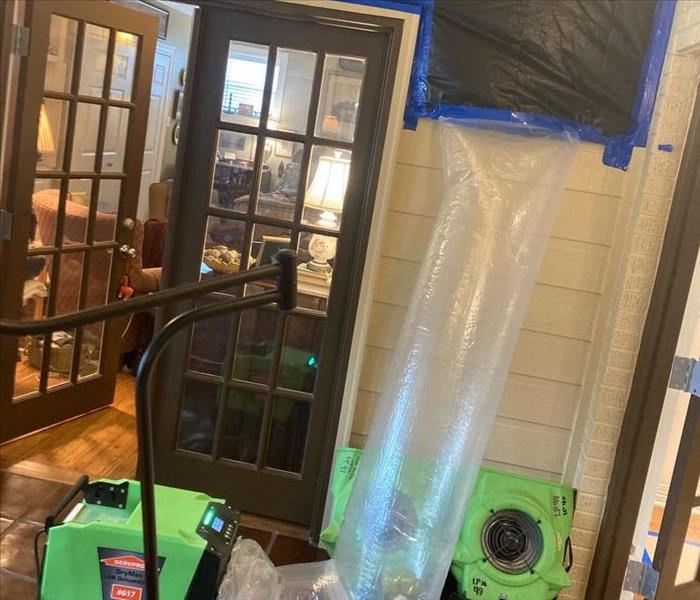 SERVPRO of East Dallas is a trusted leader in fire damage repair services.
We are located in Dallas, so we are able to reach Dallas quickly!
SERVPRO of East Dallas is a trusted leader in fire damage repair services.
We are located in Dallas, so we are able to reach Dallas quickly!
Understanding Fire Damage in Dallas Homes
SERVPRO of East Dallas is located in Dallas & offers a unique blend of vibrant city life and close-knit community vibes. However, like any major urban area, homes in Dallas are not immune to the devastating effects of fire. Whether due to a cooking accident, electrical malfunction, or even a wildfire, fire damage can leave your home in ruins and your life in turmoil.
Fire Damage Can Happen in Dallas
When a fire strikes, the immediate aftermath can be overwhelming. The damage extends beyond what the flames touch, including smoke damage, soot residue, and water damage from firefighting efforts. Here's a breakdown of the types of damage you might encounter:
- Structural Damage: This includes burned walls, ceilings, and floors. The structural integrity of your home might be compromised, requiring professional assessment.
- Smoke and Soot Damage: Smoke can infiltrate every nook and cranny, leaving behind a pervasive odor and discoloring surfaces. Soot can cover surfaces with a fine, oily residue that is difficult to clean.
- Water Damage: The water used to extinguish the fire can soak into carpets, walls, and furniture, leading to potential mold growth if not properly addressed.
Steps to Take After a Fire
Ensure Safety: Before re-entering your home, ensure it is safe to do so. Contact local authorities and wait for their approval.
Contact Your Insurance Company: Report the fire to your insurance company as soon as possible. Document the damage with photos and keep a detailed inventory of affected items.
Secure the Property: Board up windows and doors to prevent further damage from weather or theft.
Professional Assessment: Hire a licensed fire damage restoration company in Dallas. They will assess the damage, create a plan for cleanup and repairs, and help you navigate the insurance claims process.
Fire Damage Restoration Process
Assessment and Inspection: Restoration professionals will evaluate the extent of the damage, including structural, smoke, soot, and water damage.
Water Removal and Drying: Using industrial-grade dehumidifiers and air movers, the team will remove water and dry affected areas to prevent mold growth.
Smoke and Soot Cleanup: Specialized equipment and techniques are used to clean surfaces and remove smoke odor.
Restoration and Reconstruction: This involves repairing or replacing damaged structures, repainting, and restoring your home to its pre-fire condition.
Experiencing a fire in your Dallas home can be a traumatic event, but understanding the steps to take and having a plan for recovery can make a significant difference. Remember, the key to effective recovery is immediate action, professional help, and preventive measures to ensure the safety of your home and loved ones in the future.
SERVPRO Presents! Our Favorite East Dallas Activities!
7/16/2024 (Permalink)
 We are happy to share some of our favorites when it comes to East Dallas.
We are happy to share some of our favorites when it comes to East Dallas.
East Dallas is a vibrant and diverse area that offers a unique blend of culture, outdoor activities, and culinary delights. Whether you're a longtime resident or a first-time visitor, there's always something new and exciting to explore. Here are some fun things to do in East Dallas that are sure to make your time here memorable.
1. Explore White Rock Lake
White Rock Lake is the jewel of East Dallas and a haven for outdoor enthusiasts. This beautiful urban oasis offers a variety of activities:
- Biking and Jogging: With over 9 miles of trails, White Rock Lake is perfect for a scenic bike ride or a leisurely jog. The views of the lake and surrounding greenery are simply stunning.
- Paddleboarding and Kayaking: Rent a paddleboard or kayak and enjoy a peaceful day on the water. It's a great way to experience the lake up close and maybe even spot some local wildlife.
- Picnicking: There are numerous picnic spots around the lake, complete with tables and grills. Pack a lunch and enjoy a relaxing day by the water.
2. Visit the Dallas Arboretum and Botanical Garden
Located on the southeastern shore of White Rock Lake, the Dallas Arboretum and Botanical Garden is a must-visit destination. Here, you can:
- Stroll Through Beautiful Gardens: The arboretum features 66 acres of meticulously landscaped gardens, showcasing a stunning variety of plants and flowers year-round.
- Seasonal Festivals: The arboretum hosts several seasonal festivals, including the popular Autumn at the Arboretum and Dallas Blooms in the spring. These events feature elaborate displays, family activities, and special exhibits.
- Educational Programs: Attend one of the many gardening workshops or nature classes offered for both adults and children.
3. Discover Local Art and Culture
East Dallas is home to a thriving arts scene with several galleries and cultural spots worth visiting:
- Bath House Cultural Center: Located on the shores of White Rock Lake, this center hosts art exhibits, theater performances, and cultural events. The historic building itself is a sight to see.
- Deep Ellum: Just a short drive from East Dallas, Deep Ellum is known for its vibrant street art, music venues, and eclectic shops. Spend an afternoon exploring the murals and catching a live performance at one of the many venues.
4. Enjoy the Culinary Scene
East Dallas boasts a diverse and delicious culinary landscape. Here are a few spots to check out:
- Smoky Rose: This trendy smokehouse offers a relaxed atmosphere and a menu filled with delicious smoked meats and Southern-inspired dishes. Their outdoor patio is a great place to unwind.
- Goodfriend Beer Garden and Burger House: Known for its creative burgers and extensive beer selection, this spot is perfect for a casual meal with friends or family.
- Hypnotic Donuts: Start your day with a visit to Hypnotic Donuts for some of the most unique and delicious donuts in Dallas. Their quirky creations and friendly atmosphere make it a local favorite.
5. Shop Local at the Dallas Farmers Market
The Dallas Farmers Market is a great place to support local farmers and artisans while enjoying fresh produce and handmade goods:
- The Shed: This open-air pavilion is where local farmers sell their fresh fruits, vegetables, and other farm products. It's a great place to find seasonal ingredients for your next meal.
- The Market: Located indoors, The Market features a variety of food vendors, specialty shops, and restaurants. It's a perfect spot to grab a bite to eat and browse unique local products.
6. Take a Historical Tour
Learn about the rich history of East Dallas by taking a historical tour:
- Swiss Avenue Historic District: This beautiful neighborhood is known for its well-preserved early 20th-century homes. Take a walking tour to admire the architecture and learn about the history of the area.
- Old East Dallas: Explore the historic districts of Old East Dallas, where you can find charming Victorian homes and other historical landmarks.
Conclusion
East Dallas is a dynamic and exciting part of the city with something for everyone. Whether you're looking for outdoor adventures, cultural experiences, or culinary delights, you'll find it all in this vibrant area. So, grab your friends and family and start exploring everything East Dallas has to offer!
A brief history of our life here in Balch Springs, Texas
6/24/2024 (Permalink)
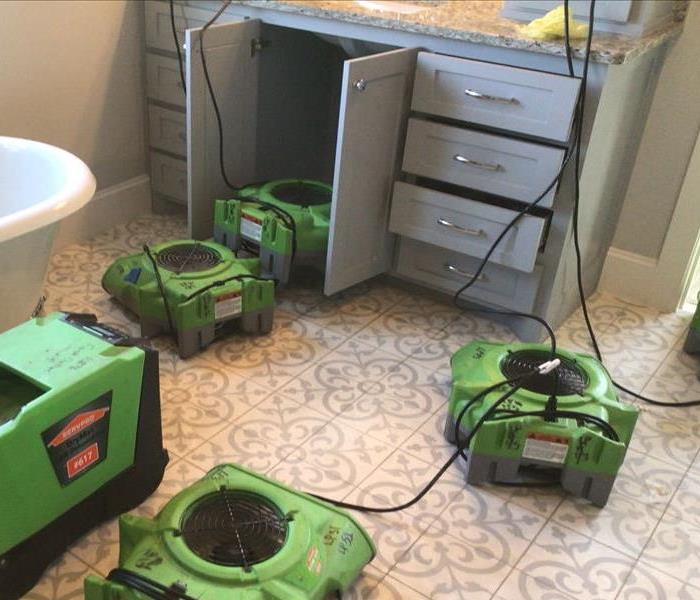 We are happy to call Balch Springs our home. SERVPRO of Balch Springs is happy to help all of our community, one job at a time.
We are happy to call Balch Springs our home. SERVPRO of Balch Springs is happy to help all of our community, one job at a time.
Balch Springs, Texas, a vibrant suburb located southeast of Dallas, has a rich history that dates back to the 19th century. Named after John M. Balch, who discovered several springs in the area, the city has grown from its humble beginnings into a thriving community.
Early Settlers and Development
The area now known as Balch Springs was first settled in the 1840s by pioneers seeking fertile land and water sources. John M. Balch, one of the early settlers, found natural springs on his property, which became a vital resource for the growing community. These springs not only provided water but also helped attract more settlers to the region.
Formation and Growth
The community remained relatively small and rural throughout the late 19th and early 20th centuries. It wasn’t until the 1950s that significant growth began. In 1953, the residents voted to incorporate Balch Springs as a city, aiming to improve local infrastructure and services. The incorporation marked a turning point, spurring residential and commercial development.
Post-War Expansion
Following World War II, Balch Springs experienced substantial growth, driven by an influx of returning veterans and their families. The construction of new housing developments and schools transformed the area from a rural community into a suburban one. The population boom also led to the establishment of various businesses and industries, contributing to the city’s economic development.
Modern Era
Today, Balch Springs is a diverse and dynamic city with a population of over 25,000 residents. It is part of the Dallas-Fort Worth metropolitan area and benefits from its proximity to major highways and the city of Dallas. The local economy is supported by a mix of retail, manufacturing, and service industries.
Balch Springs places a strong emphasis on community development and quality of life. The city boasts several parks, recreational facilities, and community programs aimed at fostering a strong sense of community and improving the well-being of its residents.
Cultural and Demographic Changes
Over the years, Balch Springs has become increasingly diverse, with a rich tapestry of cultural influences shaping the community. This diversity is reflected in the city’s cultural events, culinary offerings, and community activities, making it a vibrant place to live and visit.
Looking Forward
Balch Springs continues to evolve, focusing on sustainable growth and development. The city’s leaders are committed to improving infrastructure, expanding educational opportunities, and enhancing public safety. With its rich history and forward-looking approach, Balch Springs is poised for a bright future, continuing to build on the foundations laid by its early settlers.
From its origins around natural springs to its modern suburban landscape, Balch Springs, Texas, exemplifies a community that has grown and adapted while maintaining its unique character and sense of heritage.
Fire Damage Isn't a Good Look in Balch Springs
5/29/2024 (Permalink)
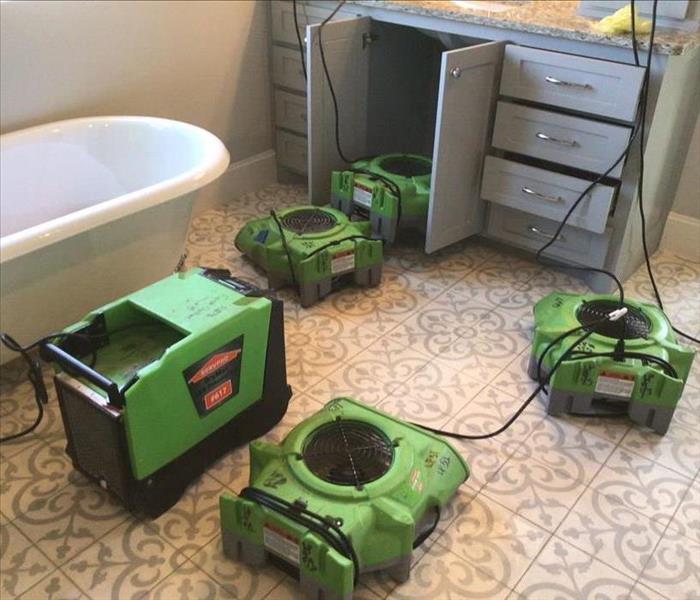 SERVPRO of Balch Springs is your trusted fire damage removal company. We are happy to help!
SERVPRO of Balch Springs is your trusted fire damage removal company. We are happy to help!
In the heart of Balch Springs, amidst the hustle and bustle of everyday life, a kitchen fire can quickly turn a peaceful home into a scene of chaos and destruction. Whether sparked by a forgotten pot on the stove or a malfunctioning appliance, the aftermath of a kitchen fire leaves residents grappling with the daunting task of cleanup and restoration. In this blog post, we'll delve into the steps and considerations involved in cleaning up after a kitchen fire in Balch Springs, offering guidance and support to those facing this challenging situation.
Assessing the Damage: The first step in the cleanup process is to assess the extent of the damage caused by the kitchen fire. Begin by surveying the affected areas, paying close attention to walls, ceilings, cabinets, appliances, and any items within close proximity to the fire. Take note of visible signs of damage such as soot, smoke residue, water damage from firefighting efforts, and structural issues that may compromise the safety of the home.
Safety First: Before initiating any cleanup activities, prioritize safety for yourself and others in the household. Ensure that all utilities such as gas, electricity, and water are turned off to prevent further hazards. Wear appropriate personal protective equipment (PPE) such as gloves, masks, and safety goggles to minimize exposure to harmful substances and contaminants present in the aftermath of a fire.
Ventilation and Air Quality: Proper ventilation is essential to remove smoke and lingering odors from the home. Open windows and doors to allow fresh air to circulate throughout the space. Use fans and air purifiers equipped with HEPA filters to improve indoor air quality and expedite the removal of smoke particles and odors. Consider consulting with HVAC professionals to assess and clean ductwork and ventilation systems affected by smoke and soot buildup.
Cleaning and Restoration: The cleanup process involves meticulous attention to detail and targeted efforts to remove soot, smoke residue, and water damage from surfaces and belongings. Use gentle cleaning agents and techniques appropriate for the materials and finishes in your kitchen, such as mild detergent solutions, baking soda paste for stubborn stains, and vinegar for deodorizing surfaces. Consider enlisting the services of professional restoration specialists experienced in fire damage cleanup for thorough and efficient results.
Replacing Damaged Items: In some cases, items and materials damaged beyond repair may need to be replaced to ensure the safety and functionality of the kitchen. Dispose of charred or extensively damaged items responsibly, following local regulations for hazardous waste disposal if necessary. Work with reputable contractors and suppliers to source replacements for appliances, cabinetry, flooring, and other fixtures as needed.
Prevention and Preparedness: As the cleanup efforts conclude, take proactive steps to prevent future kitchen fires and mitigate risks in your home. Install and maintain smoke detectors and fire extinguishers in accordance with local building codes and manufacturer guidelines. Practice fire safety protocols such as never leaving cooking unattended, keeping flammable materials away from heat sources, and maintaining a clean and clutter-free kitchen environment.
Conclusion: Cleaning up after a kitchen fire in Balch Springs is a daunting yet manageable task with the right approach and resources. By prioritizing safety, thorough assessment, meticulous cleaning, and preventive measures, residents can navigate the aftermath of a fire with resilience and determination. Remember, you're not alone in this journey—reach out to local resources, support networks, and fire damage restoration professionals for guidance and assistance along the way.
Stay safe and resilient, Balch Springs. Together, we can rise from the ashes and rebuild stronger than ever before.
Why we LOVE Balch Springs
5/29/2024 (Permalink)
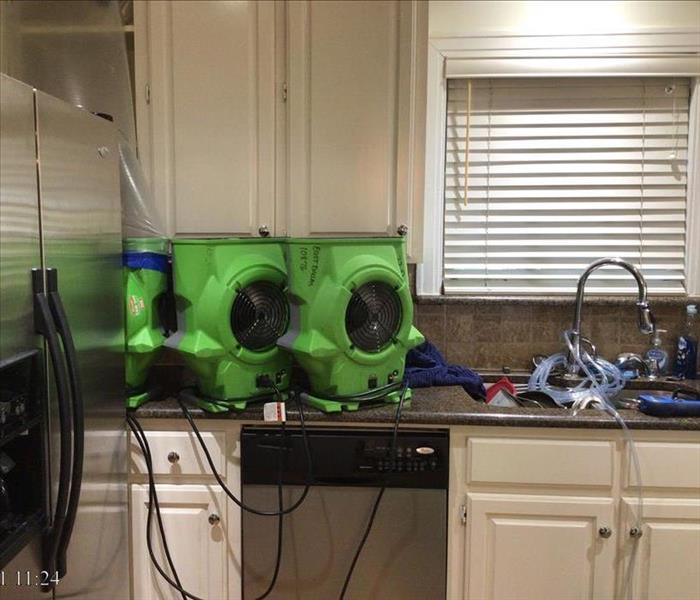 Here are some fun reasons why we love living and working in Balch Springs!
Here are some fun reasons why we love living and working in Balch Springs!
Nestled in the heart of Dallas County, Balch Springs is a vibrant and diverse community with a unique blend of small-town charm and urban convenience. While it may be lesser-known compared to its neighboring cities, Balch Springs has plenty to offer residents and visitors alike. Here are just a few reasons why Balch Springs is a great city worth exploring:
Community Spirit: Balch Springs prides itself on its strong sense of community and neighborly spirit. From local events and festivals to community clean-up initiatives, residents come together to support one another and build connections that enrich the fabric of the city.
Convenient Location: Situated just a short drive from downtown Dallas, Balch Springs offers easy access to big-city amenities while maintaining a peaceful suburban atmosphere. Whether you're commuting for work or exploring the vibrant cultural scene of Dallas, Balch Springs provides a convenient home base.
Parks and Recreation: Nature lovers and outdoor enthusiasts will appreciate the abundance of parks and recreational opportunities in Balch Springs. From scenic trails and playgrounds to sports fields and picnic areas, there's no shortage of ways to enjoy the great outdoors right in your own backyard.
Diverse Dining Options: Foodies rejoice—Balch Springs is home to a diverse array of dining options that cater to every palate. Whether you're craving authentic Tex-Mex cuisine, Southern comfort food, or international flavors, you'll find plenty of delicious eateries to satisfy your cravings.
Affordable Living: With its affordable housing options and lower cost of living compared to nearby cities, Balch Springs offers residents the opportunity to enjoy a high quality of life without breaking the bank. Whether you're a first-time homebuyer, a growing family, or a retiree looking to downsize, Balch Springs provides housing options to suit every budget and lifestyle.
In conclusion, Balch Springs may be a hidden gem in the heart of Texas, but its charm, convenience, and sense of community make it a great city worth discovering. Whether you're drawn to its small-town atmosphere, its proximity to urban amenities, or its abundance of recreational opportunities, Balch Springs has something to offer everyone. Come explore all that this vibrant city has to offer—you may just find your new favorite place to call home.
Why Rainwater isn't Always Safe
5/1/2024 (Permalink)
Rainwater, that natural elixir from the skies, has long been romanticized for its purity and freshness. But beneath its seemingly pristine facade lie hidden risks that often go unnoticed. While rainwater can be a valuable resource in certain contexts, particularly for watering plants or washing cars, it's essential to recognize that it's not always safe for consumption or other uses. In this blog post, we'll delve into the reasons why rainwater isn't always as harmless as it appears.
1. Contamination from the Atmosphere:
Contrary to popular belief, rainwater isn't as pure as it seems. As it falls from the sky, rainwater can pick up various pollutants and contaminants present in the atmosphere. These pollutants include dust, dirt, pollen, chemicals from industrial processes, and even microorganisms such as bacteria and viruses. Consequently, rainwater collected directly from rooftops or open containers can contain a cocktail of harmful substances that pose health risks if ingested or used for household purposes without proper treatment.
2. Roof Contaminants:
The surface from which rainwater is collected plays a significant role in its quality. Many people collect rainwater from rooftops, which may seem like a logical choice due to its large surface area. However, roofs can harbor a multitude of contaminants that leach into the rainwater. These contaminants can include bird droppings, dust, mold, algae, and chemicals from roofing materials such as asbestos or lead-based paints. Without adequate filtration or treatment, rainwater collected from rooftops can be far from safe for consumption.
3. Risk of Bacterial and Viral Infections:
Rainwater, especially when collected in stagnant containers, can become a breeding ground for bacteria, viruses, and other pathogens. Mosquitoes, for example, are attracted to standing water and can lay their eggs in rain barrels or other collection systems. This increases the risk of mosquito-borne diseases such as West Nile virus and dengue fever. Moreover, bacteria such as E. coli and Salmonella can thrive in untreated rainwater, leading to gastrointestinal infections if ingested.
A Quick History Lesson about Us!
4/29/2024 (Permalink)
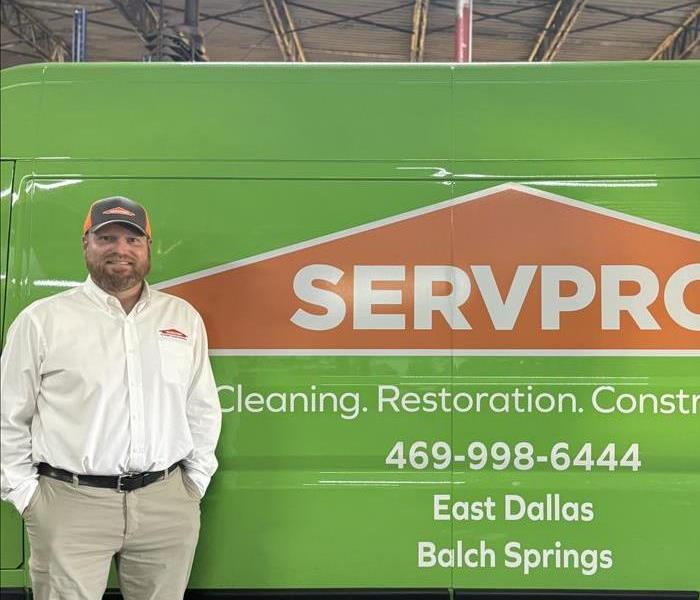 SERVPRO is happy to be the beacon of restoration and mitigation. Give us a call if you experience an emergency!
SERVPRO is happy to be the beacon of restoration and mitigation. Give us a call if you experience an emergency!
In the wake of disasters, both natural and man-made, a beacon of hope emerges to restore homes, businesses, and communities. That beacon is SERVPRO, a name synonymous with reliability, professionalism, and unparalleled service in the restoration industry. Let's embark on a journey through the history of SERVPRO, tracing its humble beginnings to its status as a trusted leader in disaster recovery and restoration.
The Early Years: A Vision Takes Shape
SERVPRO's story begins in 1967 when Ted and Doris Isaacson launched the company as a painting business in Sacramento, California. However, their entrepreneurial spirit and keen foresight led them to recognize a growing need for specialized cleaning and restoration services. With dedication and determination, the Isaacsons transformed SERVPRO into a full-fledged cleaning and restoration company, laying the foundation for its future success.
Expansion and Innovation
As SERVPRO gained momentum, it expanded its services beyond cleaning to include fire and water damage restoration. The company's commitment to excellence and innovation propelled its growth, leading to the development of advanced restoration techniques and cutting-edge equipment. With a focus on continuous improvement and staying ahead of industry trends, SERVPRO became synonymous with quality and reliability in the restoration industry.
Weathering the Storms: Disaster Response and Community Support
Throughout its history, SERVPRO has been at the forefront of disaster response, providing critical support and assistance to communities in times of crisis. From hurricanes and floods to wildfires and tornadoes, SERVPRO's network of trained professionals stands ready to mobilize at a moment's notice, helping homeowners and businesses recover and rebuild in the aftermath of devastation. Beyond restoration services, SERVPRO is committed to giving back to the communities it serves, embodying the spirit of compassion and resilience.
Balch Springs Drying Equipment
4/24/2024 (Permalink)
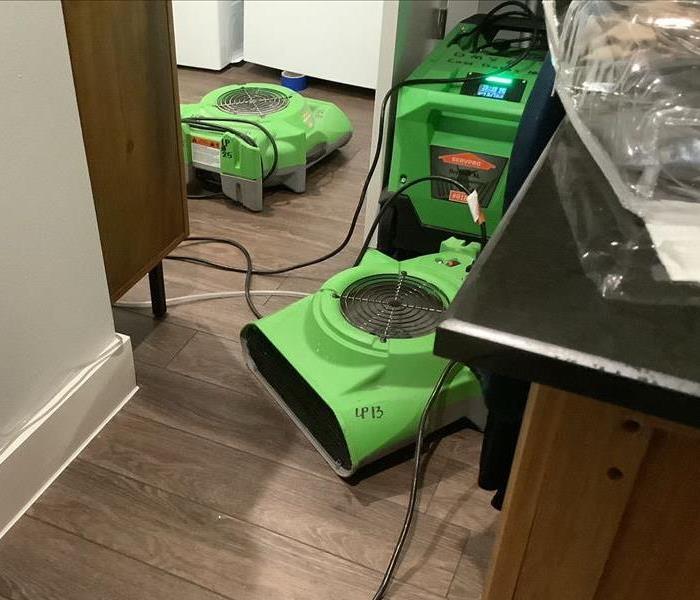 We'll work closely with you to develop a customized cleanup plan that meets your needs and exceeds your expectations.
We'll work closely with you to develop a customized cleanup plan that meets your needs and exceeds your expectations.
Don't wait to start the cleanup process – contact us today to learn more about our fire damage cleanup services and take the first step toward restoring your property to its former glory. Together, we'll rebuild and renew, one step at a time. ???? #FireDamageCleanup #RapidResponse #WeRestoreHope
Dangers of Water Damage in Your Kitchen
4/22/2024 (Permalink)
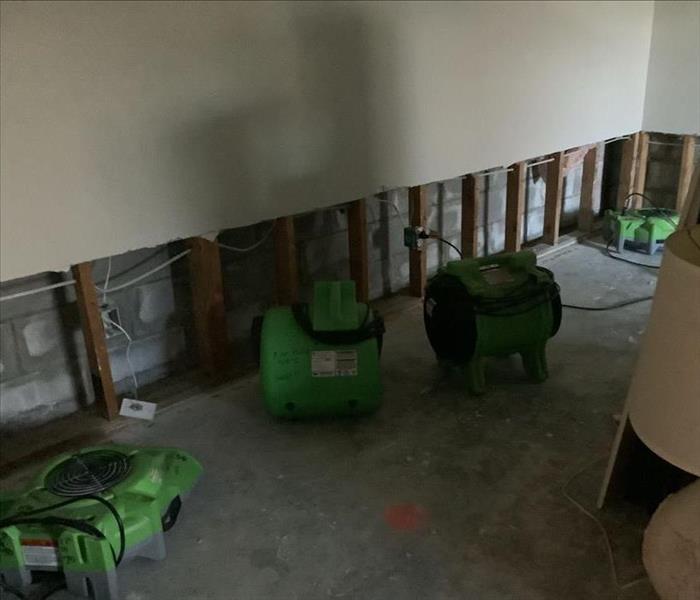 SERVPRO of East Dallas has seen kitchens suffering with water damage. Thankfully we have the knowledge and equipment to handle any size disaster.
SERVPRO of East Dallas has seen kitchens suffering with water damage. Thankfully we have the knowledge and equipment to handle any size disaster.
Water damage in the kitchen can pose various dangers and risks, both to the structure of the house and the health of its occupants. Here are some potential dangers associated with water damage in the kitchen:
Structural Damage: Water can seep into floors, walls, and ceilings, leading to structural damage such as rotting wood, weakened drywall, and compromised foundation. Over time, this can cause significant structural issues and compromise the integrity of the building.
Mold Growth: Moisture from water damage creates an ideal environment for mold growth. Mold can proliferate rapidly within 24 to 48 hours of water exposure, spreading on surfaces and releasing spores into the air. Mold not only damages surfaces but also poses health risks, as mentioned earlier.
Electrical Hazards: Water damage in the kitchen can affect electrical wiring, outlets, and appliances, leading to electrical hazards such as short circuits, electrical fires, or electrocution. Water and electricity are a dangerous combination and should be addressed promptly by professionals.
Slip and Fall Accidents: Water accumulation on kitchen floors due to leaks or flooding increases the risk of slip and fall accidents. This is particularly hazardous in a room where people frequently move around, carry objects, or stand on slippery surfaces.
Appliance Malfunction: Water damage can affect kitchen appliances such as refrigerators, dishwashers, and ovens, causing them to malfunction or stop working altogether. This not only disrupts daily routines but also poses safety risks if appliances malfunction unexpectedly.
Pest Infestation: Standing water and moisture in the kitchen attract pests such as cockroaches, ants, and rodents. These pests not only cause sanitation issues but also pose health risks and may further damage the property.
Water Contamination: Depending on the source of water damage, there is a risk of water contamination. For example, if the water comes from a sewage backup or a contaminated source, it can introduce harmful bacteria, viruses, or chemicals into the kitchen environment, increasing health risks for occupants.
Decreased Property Value: Untreated water damage can significantly decrease the value of a property. Potential buyers may be deterred by the prospect of dealing with existing damage or the possibility of hidden issues that could emerge later.
Addressing water damage promptly and thoroughly is crucial to mitigate these dangers and prevent further harm to both the property and its occupants. This often requires professional assistance to assess the extent of the damage, identify and fix the source of the water intrusion, and carry out necessary repairs and restoration work.



 24/7 Emergency Service
24/7 Emergency Service








